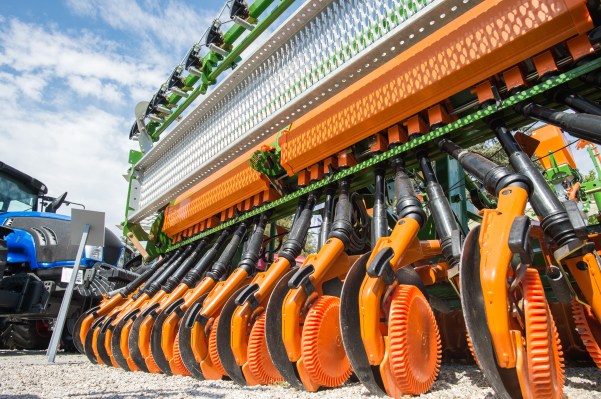Almost two centuries ago, Jethro Tull used his new horse-drawn seed drill to individually plant seeds, replacing the traditional broadcast method. An early form of precision agriculture, his ingenious tool dramatically increased yield and led to an agricultural revolution.
Another early agricultural entrepreneur, Robert Bakewell, perfected his “in-and-in” breeding system in the late 1700s so that farmers could selectively breed livestock for specific characteristics. During the last century, Norman Borlaug, an American biologist, launched the Green Revolution by developing new seed varieties, especially with wheat, that so that millions of people around the world could find adequate sustenance.
Tull, Bakewell, Borlaug and many others in between and since have worked on improving agricultural productivity. Since the beginning of modern agriculture, farmers and entrepreneurs alike have been sharpening their focus and looking at ways to apply technology to compensate for the mercurial behavior of Mother Nature and the vagaries of food prices and government policies.
Now, in the second millennium, we are challenged in new ways to increase productivity while minimizing inputs, managing costs and respecting the environment. We have reached a tipping point of sorts, and there is a new sense of urgency. Arable land and water are in short supply. Climate change is having a big impact on crop variability and yield. The global food system will need to be capable of producing food for a projected 9 billion people by 2050. That’s no small mandate.
The global food system will need to be capable of producing food for a projected 9 billion people by 2050.
How are we solving these problems? Luckily, we’ve come a long way since Jethro Tull’s horse-drawn seed drill. Today’s innovations are decidedly more high-tech, and the increase in venture capital flowing into the industry is staggering. Investment in 2014 in agtech is estimated to have been $2.36 billion. Sound like a lot? Cleantech investments that year was $2 billion and fintech was $2.1 billion.
Some of the key areas for innovation are in labor reduction, safety and smarter equipment, like tractors. Driverless tractors, for instance, have been in the field for quite some time, beginning in 1940 when Frank W. Andrew, a farmer in Illinois, invented “spiral farming” by attaching a remote arm to a driverless tractor.
More recently, we’ve seen advancements in the Internet of Things reach agriculture with the potential to provide both integrated knowledge and hardware. The arrival of big data sensing, collecting, processing and storage systems is meeting robots, drones and other hardware that is beginning to promise big returns on the same amount of soil. Unless we find some cheap rockets soon, it’s unlikely that we’ll find more acreage for agricultural production in time to make up for the current supply of arable land.
Amir Nashat, a partner at Polaris Ventures in Waltham, MA, is keenly aware of the opportunities in agtech. He and Polaris have been active with AgBiome, a company that uses microbes to increase crop productivity. He is not only intent on microbiomes, he also is watching over development of new systems for managing drought and other extreme weather conditions.
Joining Nashat is another agtech entrepreneur, Tom Laurita, president and CEO of NewLeaf Symbiotics. Laurita views agricultural innovations as either above- or below-the-ground. He works from below, with plant bacteria to improve seed productivity.
Agricultural entrepreneurs are beginning to sprout from all corners of the world.
Others are working on open systems that they hope will create an accessible database for farmers around the globe who will benefit from a super-sized, smarter Agricultural Extension Service. For example, big data-driven growing systems are beginning to emerge as a way to integrate a growing amount of information about crops, weather, consumer preferences, logistics and productivity measurements.
This is all to say that there is a lot going on in this emerging field. Agricultural entrepreneurs are beginning to sprout from all corners of the world. While the increased activity is promising, there’s still work to be done. We have yet to see the full impact of today’s technologies on agriculture. Despite all the innovation and investment, the most promising early stage technologies are having a hard time finding their place in the market.
Part of the reason is that collaboration in agtech is broken. We’ve seen startups that attempt to connect chefs with farmers while not addressing the production bottlenecks of the farmers with whom they work. Others are trying to bring big data to farmers without ever consulting with a farmer. Others are trying to bring healthier food directly to our doorsteps, while neglecting the impact of their ideas upon waste and packaging.
In order to truly move the needle in agtech, we need a shift from an isolated, siloed view to a more inclusive, collaborative view. We’re starting to see it — chefs are connecting with farmers, farmers are connecting with consumers, healthcare is connecting with food science. But now more than ever, scientists, engineers, farmers and environmentalists need to close ranks to take a serious look at how to address the production end of our food system with new and integrated knowledge.
